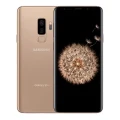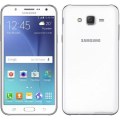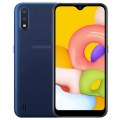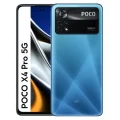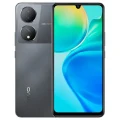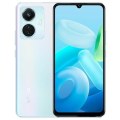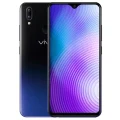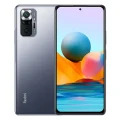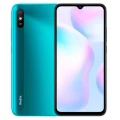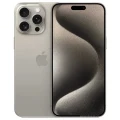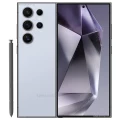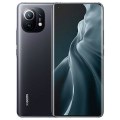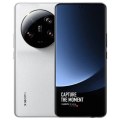- Awesome page
- Latest Mobile
- Smartphones
- Samsung Galaxy A24
Samsung Galaxy A24
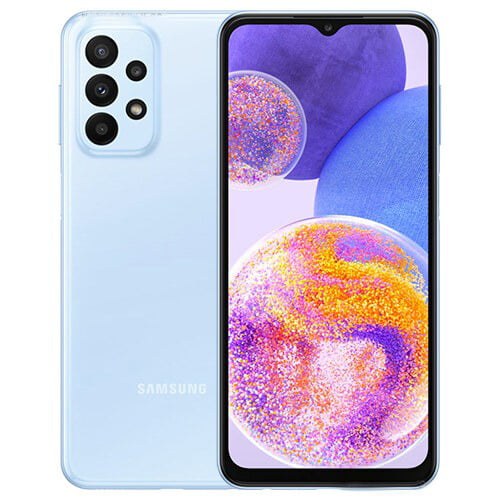


Samsung Galaxy A24 Price in Bangladesh
The Samsung Galaxy A24 is a well-liked option for smartphones in Bangladesh, providing a mix of features and cost-effectiveness.
The cost may vary slightly based on the particular model and seller, but on average, expect to see it priced at around ৳36999 for the 8GB RAM and 128GB storage version. It is crucial to acknowledge that prices can vary over time, therefore it is advisable to verify the current pricing information with local retailers or online marketplaces.
Specifications
General
| Model | Samsung Galaxy A24 4G |
| Announced | 19-05-2023 |
| Released | 05-05-2023 |
| Status | Available |
| Official price | 8GB 128GB ৳ 36,999 |
| Unofficial price | 8GB 128GB ৳ 24,000 |
Design
| Dimensions | 162.1 x 77.6 x 8.3 mm (6.38 x 3.06 x 0.33 in) |
| Weight | 195 g (6.88 oz) |
| Colors |
Black, Lime Green, Blue gradient, Dark red |
Network
| Technology | GSM / HSPA / LTE |
| 2G Network |
GSM 850 / 900 / 1800 / 1900 - SIM 1 & SIM 2 (dual-SIM only) |
| 3G Network |
HSDPA 850 / 900 / 2100 |
| 4G Network |
1, 3, 5, 7, 8, 20, 28, 38, 40, 41 |
| GPRS <strong>GPRS</strong> (General Packet Radio Service) is a packet oriented mobile data service on the 2G and 3G cellular communication system's global system for mobile communications (GSM), Generally, GPRS is used for the purpose of wireless data transfer, such as sharing pictures and videos or browsing the Internet via a mobile phone connection. | |
| EDGE <strong>EDGE</strong> (Enhanced Data GSM Environment) is a wireless network technology generally considered the next step in the 2G network offers data transfer rates up to four times faster than ordinary GSM networks, Generally, EDGE is used for the purpose of wireless data transfer, such as sharing pictures and videos or browsing the Internet via a mobile phone connection. | |
| Speed | HSPA, LTE-A |
Display
| Display Type <strong>Display Technology => </strong> A number of display technologies and types used in mobile phones => TFT (Thin Film Transistor), IPS (In-Place Switching), OLED (Organic Light Emitting Diode), AMOLED (Active-Matrix Organic Light-Emitting Diode), Super AMOLED (an even advanced version of AMOLED), Resistive Touchscreen (Resistive touchscreens contain two layer of conductive material with a very small gap between them which acts as a resistance), Capacitive Touchsceen (Capacitive touchscreen technology consists of a layer of glass coated with a transparent conductor) | Super AMOLED capacitive touchscreen, 16M colors |
| Size | 6.5 inches, 103.7 cm2 (~82.4% screen-to-body ratio) |
| Resolution | 1080 x 2340 pixels, 19.5:9 ratio (~396 ppi density) |
| Features |
90Hz, 1000 nits (peak) |
Camera
Main camera
| Camera Setup | Triple |
| Primary <strong>Camera</strong> is able to capture photographs and usually videos, The most important characteristics of a camera are the resolution (measured in megapixels), lens focus type (fixed or automatic), higher megapixel cameras are known to capture higher quality photos, but not always a good measurement of the photos quality. |
50 MP, f/1.8, (wide), PDAF, OIS 5 MP, f/2.2, 123˚ (ultrawide), 1/5.0&amp;amp;quot;, 1.12µm 2 MP, f/2.4, (macro) |
| Features |
LED flash, panorama, HDR |
| Video | 1080p@30fps |
Selfie camera
| Camera Setup | Single |
| Primary <strong>Camera</strong> is able to capture photographs and usually videos, The most important characteristics of a camera are the resolution (measured in megapixels), lens focus type (fixed or automatic), higher megapixel cameras are known to capture higher quality photos, but not always a good measurement of the photos quality. |
13 MP, f/2.2, (wide) |
| Video | 1080p@30fps |
Hardware
| Chipset <strong>Chipset</strong> is a group of integrated circuits designed to perform one or a more dedicated functions, often with real time computing constraints, Popular smartphones are equipped with more advanced embedded chipsets that can do many different tasks depending on their programming. | Mediatek MT8781 Helio G99 (6nm) |
| CPU <strong>CPU</strong> (Central Processing Unit) mostly known as processors, CPU processes instructions in order to carry out certain functions that make your device operate properly. Processors are often described as the brain of computers, smartphones and tablets, Smartphones and tablets rely on processors to carry out their every task, Processors are an incredibly important factor in selecting any type of computing device, including your smartphone. | Octa-core (2x2.2 GHz Cortex-A76 & 6x2.0 GHz Cortex-A55) |
| GPU <strong>GPU</strong> (Graphics Processing Unit) is a single-chip processor designed to rapidly manipulate and alter memory to accelerate the creation of images in a frame buffer intended for output to a display, This includes things such as lighting effects, object transformations, and 3D motion. | Mali-G57 MC2 |
| RAM (Memory) <strong>RAM</strong> (Random Access Memory) is a type of computer memory that can be accessed randomly, any byte of memory can be accessed without touching the preceding bytes that allows information to be stored and accessed quickly from random locations. RAM is the most common type of memory found in computer systems, smartphones, tablets and other electronic devices. | 4/6/8 GB |
| Internal Storage <strong>Internal Storage</strong> is a data storage space (flash memory) mostly used in smartphones, tablets and other electronic devices where operating system, apps, music, photos, videos, files and other user data Is stored. | 128 GB |
| Sensors <strong>Sensors</strong> are electronic components that detects and responds to some type of input from the physical environment. The specific input could be light, heat, motion, moisture, pressure and location, The output is generally a signal that is converted to use in computing systems, a location sensor, such as a GPS receiver is able to detect current location of your electronic device. |
Fingerprint (side-mounted), accelerometer, gyro, compass Virtual proximity sensing |
Connectivity
| Bluetooth <strong>Bluetooth</strong> is a wireless communications technology for exchanging data between mobile phones, headsets, computers and other network devices over short distances without wires, Bluetooth technology was primarily designed to support simple wireless networking of personal consumer devices. | 5.3, A2DP, LE |
| Infrared <strong>Infrared</strong> connectivity is an old wireless technology used to connect two electronic devices. It uses a beam of infrared light to transmit information and so requires direct line of sight and operates only at close range. | |
| USB | USB Type-C 2.0 |
| GPS <strong>GPS</strong> The Global Positioning System is a satellite-based radio navigation system, GPS permits users to determine their position, velocity and the time 24 hours a day, in all weather, anywhere in the world, In order to locate your position, your device or GPS receiver must have a clear view of the sky. | GPS, GLONASS, GALILEO, BDS, QZSS |
| NFC <strong>NFC</strong> (Near field communication) is a set of standards for smartphones and similar devices to establish peer-to-peer radio communications with each other by touching them together or bringing them into proximity, usually no more than a few inches. |
Battery
| Battery Type <strong>Battery Type => </strong> Cell phones run on various kinds of batteries depending on the manufacturer, phone size or shape and features. There are basically four types of cell phone batteries => Lithium Polymer, Lithium Ion, Nickel Metal Hydride and Nickel Cadmium. | Non-Removable Li-Po |
| Capacity <strong>Battery Capacity</strong> is a measure (typically in Amp-hr) of the charge stored by the battery, and is determined by the mass of active material contained in the battery. The battery capacity represents the maximum amount of energy that can be extracted from the battery under certain conditions. | 5000 mAh |
| Charging Charging | 25W wired |
The Samsung Galaxy A24 Magic Meets Practicality in Every Swipe
In a world where smartphones are not just communication tools but lifestyle statements, the Samsung Galaxy A24 emerges as a beacon of innovation and affordability. Designed for those who crave a balance between performance and cost, this device caters to smartphone shoppers, Samsung fans, and tech enthusiasts alike. In this blog post, we’ll explore what makes the Galaxy A24 a strong contender in the bustling smartphone market. You can expect a comprehensive review covering everything from design and performance to camera quality and battery life.
Unboxing and First Impressions
Opening the sleek packaging of the Samsung Galaxy A24 is an experience filled with anticipation. The first thing you notice is the phone’s design, which exudes a modern aesthetic that Samsung is known for. The build quality feels robust despite its mid-range price, featuring a minimalist design that fits comfortably in hand.
Upon powering the device, the interface greets you with smooth transitions, hinting at the seamless experience Samsung promises. The initial setup is straightforward, making it easy for both tech-savvy users and newcomers alike. Right from the start, the Galaxy A24 impresses with its user-friendly nature.
The simplicity of unboxing coupled with the immediate first-hand feel of the phone sets a promising tone for further exploration. Each aspect of the design seems thoughtfully crafted to enhance the user’s tactile experience.
Performance Analysis
At the heart of the Galaxy A24 lies a processor designed to handle everyday tasks with ease. Whether you’re browsing the web, streaming videos, or playing games, the A24’s processor works efficiently to deliver a lag-free experience. Equipped with ample RAM, this phone supports seamless multitasking, allowing users to switch between apps without any noticeable slowdown.
Storage options provide enough space for your apps, photos, and files, ensuring that you won’t run out of room quickly. For tech enthusiasts who demand more, expandable storage offers a level of flexibility that is often absent in competitors’ devices.
The real-world speed tests showcase the A24’s capability to handle multiple tasks simultaneously. It proves itself as a reliable companion for users who demand performance on a budget.
Camera Quality Review
Cameras have become pivotal for any smartphone, and the Galaxy A24 does not disappoint. Its rear camera system captures sharp and vibrant images, even in less-than-ideal lighting conditions. The depth sensor adds an artistic touch to portraits, creating a professional-looking bokeh effect.
Selfie lovers will appreciate the front camera’s clarity, which ensures your photos are crisp and ready to share on social media. Video recording is smooth and stable, making it suitable for both casual users and budding content creators.
Sample photos reveal the camera’s strength in detail and color accuracy, providing an enjoyable experience for photography enthusiasts. The Galaxy A24 makes documenting memories effortless and enjoyable.
Battery Life and Charging
Battery performance is where the Samsung Galaxy A24 shines brightly. With a battery that easily lasts through a full day of regular use, it eliminates the anxiety of frequent recharging. Whether you’re navigating through a busy workday or indulging in a weekend binge, this phone keeps up with your pace.
Charging is efficient, thanks to its fast-charging capabilities that minimize downtime. The optimization features like power-saving modes further extend battery life, ensuring consistent performance even under heavy usage.
These battery features make the A24 a dependable ally for users who rely on their phones for both work and play throughout the day.
Display and Audio Quality
The Galaxy A24’s display delivers a vibrant viewing experience, with colors that pop and a resolution that captures every detail. Whether you’re watching videos or scrolling through photos, the screen offers a delightful visual treat. This is supplemented by audio quality that enriches media consumption.
The sound output is clear and well-balanced, providing an immersive experience whether you’re listening through speakers or headphones. Together, the display and audio features create a multimedia experience that stands out in its price range.
This combination of visual and auditory richness enhances everyday interactions, making each moment on the A24 engaging and enjoyable.
User Interface and Software
Running on Samsung’s intuitive UI, the Galaxy A24 provides a seamless user experience. The software is designed with customization in mind, allowing users to tailor their phone to their liking. From themes to widgets, the level of personalization available adds an element of fun and practicality.
Samsung’s unique software features enhance usability, offering tools that simplify tasks and boost productivity. The operating system is regularly updated, ensuring security and access to the latest features.
This user-friendly interface makes navigation a breeze, making it accessible for all users, regardless of technical expertise.
Comparison with Competitors
When stacked against similar smartphones in its price range, the Samsung Galaxy A24 proves its mettle through its comprehensive feature set. Many competitors might offer one or two standout features, but the A24 combines them all into one package.
From superior battery life to an impressive camera system, it holds several advantages over its peers. However, some might find that other devices offer better display resolutions or slightly faster processors, depending on what’s prioritized.
The Galaxy A24 stands out as a balanced choice for those seeking performance without compromising on essential features.
Final Verdict
In conclusion, the Samsung Galaxy A24 offers a compelling mix of style, efficiency, and affordability. It excels in areas that matter most to everyday users, such as battery life and camera quality, while providing a user-friendly experience.
For smartphone shoppers who value functionality over frills, and Samsung fans looking for a reliable upgrade, the A24 is undoubtedly a solid choice. It encapsulates what a mid-range device should be and does so with finesse.
